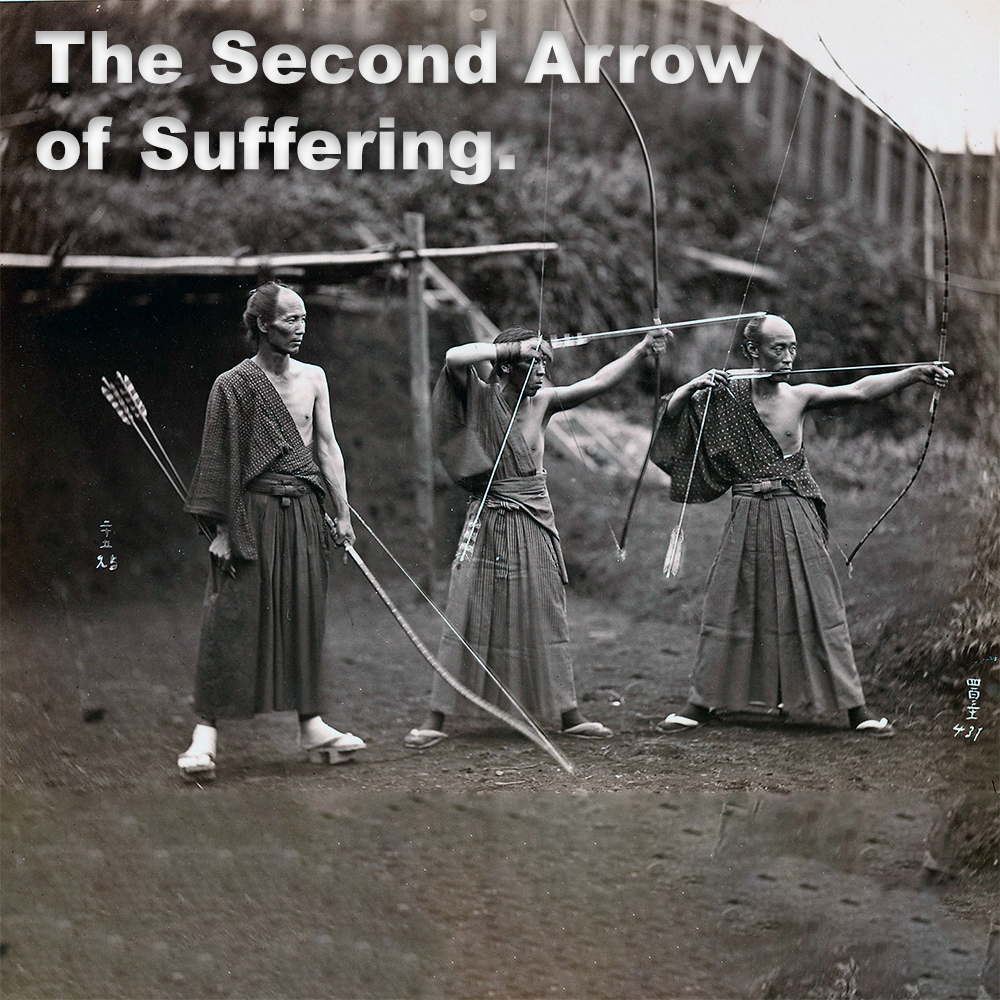
"The Second Arrow of Suffering."
Posted by ADAM CARTER on DEC 29, 2022

The Second Arrow of Suffering.
We all have had something upsetting or disappointing happen, it’s life after all, and sometimes we get frustrated at ourselves or others. We wish things could be different.
Our interpretation of events plays a large role in how we experience them. We get ill, have accidents and get emotionally wounded for numerous reasons, and the body mechanism of pain is a natural response.
There are so many annoyances in life that can cause suffering beyond those that are caused by illness or injury.
For example, my gripe is with McDojo’s and instructors who cheat their students and falsify their credentials.
These “instructors” who have set up their martial arts school just so they can feed their own ego, and of course, make their students and their followers believe their ….. BS.
I notice it and have an immediate reaction of annoyance….. We can all go quickly from a situation - someone annoys us, something seems unfair or even hurtful - to developing all kinds of emotions and thoughts that have little to do with the original issue.
The parable of the second arrow is a well-known Buddhist story about dealing with suffering more skillfully. It is said the Buddha once asked a student: “If a person is struck by an arrow, is it painful? If the person is struck by a second arrow, is it even more painful?”
He then went on to explain: “In life, we can’t always control the first arrow. However, the second arrow is our reaction to the first. This second arrow is optional.”
This is sometimes interpreted as meaning that pain is inevitable, but suffering is optional. I’m not sure I would go this far – to my mind there are clearly situations where to experience suffering is the only human response. However, it is true that our interpretation of events plays a large role in how we experience them, and that we do have a tendency to overdramatize much of what happens to us.
We can go quickly from a situation - someone annoys us, we’re coming down with a cold, covid, the flu (or any illness) - to extrapolating all kinds of emotions and thoughts from it which have little to do with the original stimulus.
This can be seen as the second arrows of suffering - the ones we add onto the original arrows which life is already firing at us.
So, how do you avoid the second arrow? First, notice the first arrow. When you are in emotional pain, allow yourself to feel it. You may notice your arrows in other ways, like frustration, irritation, and emotional or physical pain. Next, become aware and notice your emotional reaction. Maybe it is a desire to yell or complain to someone. Maybe you get angry with yourself and turn your emotions inward. Catch yourself adding more pain and suffering. This is the second arrow.
Finally, give yourself credit for recognizing and avoiding the second arrow. You are learning a new response. You can free up your thoughts for circumstances you can control.
We probably find ourselves dealing with the second arrow of suffering many times during the day. The story is not about denying our initial reaction, but to have a choice of how to react to the second arrow. Over time, being aware of this choice, and refraining from shooting endless second arrows at ourselves, can help free us of much unnecessary suffering…… “We are shaped by our thoughts; We become what we think.”
Inspired by Steve Rowe 9th dan Shikon International
![]() Photo Credit: Henry and Nancy Rosin Collection of Early Photography of Japan. Smithsonian Institution.
Photo Credit: Henry and Nancy Rosin Collection of Early Photography of Japan. Smithsonian Institution.
